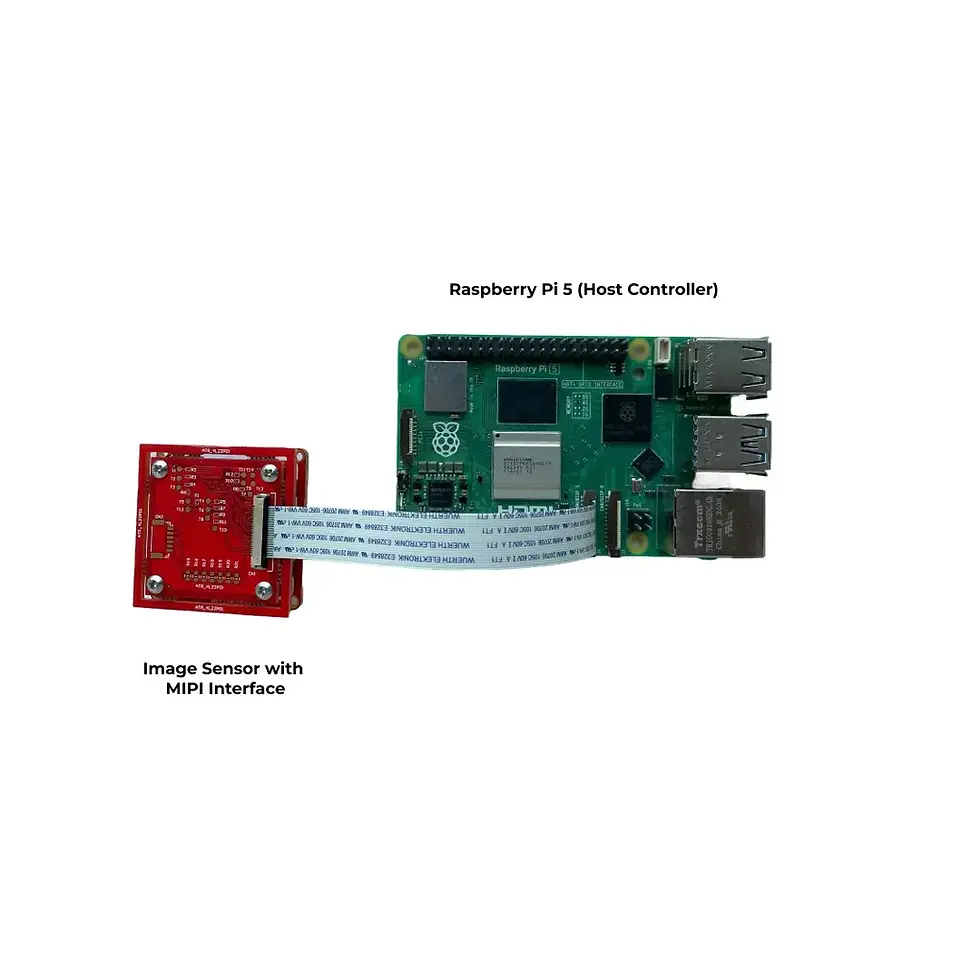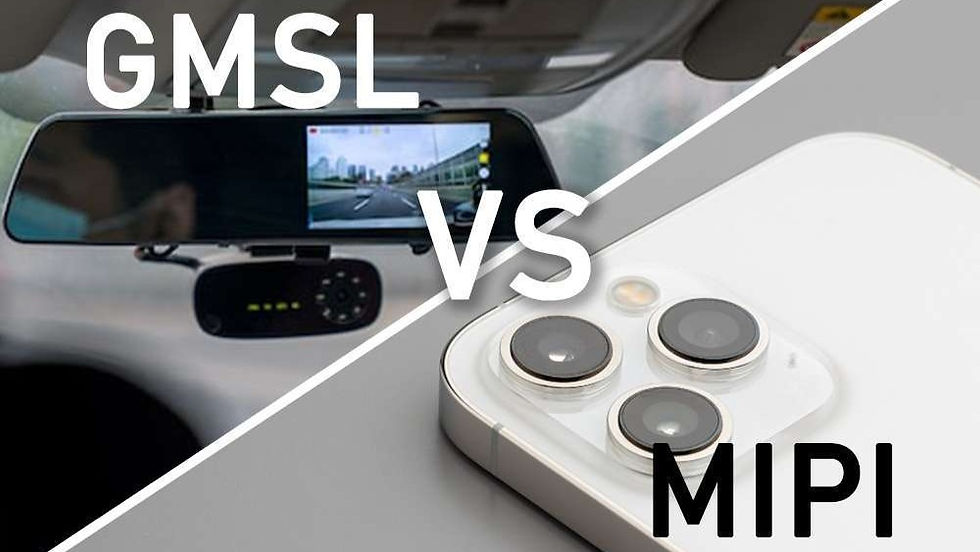What is a MIPI camera? Detailed Exploration of MIPI CSI-2 Interface
- Vadzo Imaging

- Jun 30, 2023
- 3 min read
Updated: 3 days ago
Mobile Industry Processor Interface (MIPI) has become one of the most efficient and widely adopted standards for connecting cameras to host processors in embedded systems.

As embedded vision becomes increasingly relevant in AI, IoT, robotics, and smart edge devices, MIPI Cameras provides a scalable and cost-effective interface for integrating advanced imaging.
In this article, we’ll dive into the evolution of the MIPI interface, how it works, and why it is preferred over USB in many embedded vision applications.
Looking to innovate with MIPI Camera technology? The Bolt-291CRS is engineered for the highest performance in real-time.
Evolution of the MIPI Camera Interface
Before we explore how MIPI works or why it's so widely used, let’s take a brief look at how the MIPI standard has evolved.
CSI-1
The original version, Camera Serial Interface 1 (CSI-1), established the foundation for serial communication between camera modules and host processors. It marked the beginning of the MIPI interface standardization for imaging.
CSI-2
CSI-2 arrived in 2005 and introduced a layered architecture, which entailed:
Physical Layer
Lane Merger Layer
Low-Level Protocol Layer
Pixel-to-Byte Conversion Layer
Application Layer
This modular design improved performance and flexibility. The 2017 update added support for higher color depths (RAW-16 and RAW-20), increased the number of virtual channels from 4 to 32, and introduced Latency Reduction and Transport Efficiency (LRTE) enhancements.The 2019 release extended support further by enabling RAW-24 format.
CSI-3
First released in 2012 and updated in 2014, MIPI CSI-3 offered a high-speed, bidirectional interface. It was designed to handle advanced imaging applications, allowing simultaneous transmission and reception of image data.
Despite these advancements, CSI-2 remains the most widely used MIPI interface, especially in embedded systems across automotive, drones, smart city infrastructure, medical imaging, and computer vision. This continued adoption is largely driven by the ability of MIPI cameras to balance performance and power efficiency.

Understanding MIPI CSI-2 in More Detail
MIPI CSI-2 is a high-speed serial interface that connects image sensors to embedded processors. It's the backbone of many modern em
bedded vision systems. This interface enables seamless transmission of raw image data for further processing.
The CSI-2 interface allows the image sensor and the embedded processor to work together as a tightly integrated imaging system. It facilitates real-time image capture, transmission, and processing in a reliable and power-efficient manner.
This architecture allows MIPI cameras to deliver higher resolution and faster frame rates compared to legacy interfaces like Digital Video Port (DVP), which is based on parallel signaling.
MIPI CSI-2 vs USB Cameras: Why MIPI Has the Edge
While both USB and MIPI CSI-2 interfaces have their place in embedded vision, MIPI is often the better fit for performance-critical applications. Here's why:
Bandwidth
USB 3.0 offers a theoretical maximum bandwidth of 5 Gbps, but in practical terms, it typically delivers around 3.6 Gbps.
MIPI CSI-2, on the other hand, can reach up to 6 Gbps, with real-world performance close to 5 Gbps — offering a clear advantage in high-throughput imaging scenarios.
Maximize the performance of your device with MIPI Camera technology. The IMX291 Low Light 1080P MIPI Camera and find the perfect fit for your needs.
Efficiency
Unlike USB — a general-purpose interface — CSI-2 is optimized for low-latency, continuous streaming of image data. This makes it highly suitable for applications requiring fast processing and real-time responsiveness.
Summary
MIPI interfaces, especially CSI-2, have become the de facto standard in embedded vision design. Their evolution from CSI-1 to CSI-3 reflects the growing need for higher data rates, more virtual channels, and better power efficiency.
By offering high bandwidth, precise synchronization, and low power operation, MIPI Cameras enables developers to build next-generation vision systems across a wide range of industries — from medical imaging to autonomous vehicles.
Enhance Your Vision: Discover Our Diverse Camera Range!
IMX291 2MP MIPI Fixed Focus Camera OV5640 5MP MIPI Auto Focus Camera AR1335 13MP MIPI Fixed Focus Camera
.webp)








